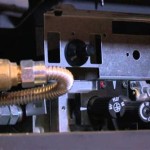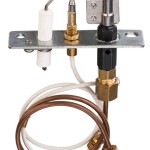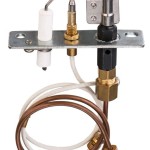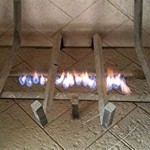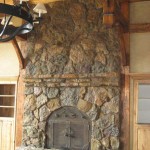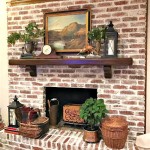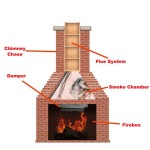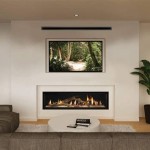Gas Fireplace: Direct Vent vs Ventless
Gas fireplaces offer a cozy and efficient way to heat a room and add ambiance to any home. However, choosing the right type of gas fireplace can be a daunting task, especially when deciding between direct vent and ventless options. Both systems have their own advantages and disadvantages, and the best choice ultimately depends on your specific needs and circumstances.
Direct Vent Gas Fireplaces
Direct vent gas fireplaces feature a venting system that draws fresh air from the outside and expels combustion byproducts directly outside. This closed system prevents any harmful gases from entering the home, ensuring a safe and clean burning experience. The vent pipe typically runs vertically through the roof or horizontally through a wall, allowing for efficient and effective ventilation.
Advantages of Direct Vent Gas Fireplaces:
Direct vent fireplaces offer several advantages:
- Safety: As the combustion byproducts are vented outside, direct vent fireplaces pose no risk of carbon monoxide buildup within the home, ensuring a safe environment for occupants.
- Energy Efficiency: Direct vent systems utilize fresh air from outside, preventing heat loss from the house and improving energy efficiency.
- Versatility: Direct vent fireplaces can be installed in various locations, even in rooms without existing chimneys.
Disadvantages of Direct Vent Gas Fireplaces:
Despite their advantages, direct vent fireplaces have some drawbacks:
- Installation Complexity: Installing a direct vent system can require extensive modifications and involve cutting through walls or roofs, potentially increasing the installation cost.
- Aesthetic Limitations: Direct vent fireplaces may require a visible vent pipe, which can affect the aesthetic design of the fireplace.
- Potential for Noise: The vent system can generate a noticeable hum or whooshing sound during operation.
Ventless Gas Fireplaces
Ventless gas fireplaces, also known as "direct vent" or "sealed combustion" fireplaces, do not require a vent pipe. Instead, they utilize a sealed combustion system that burns gas cleanly and efficiently, with minimal byproducts. Ventless fireplaces feature a catalytic converter that oxidizes the majority of gases released during combustion, reducing emissions and allowing for a vent-free design.
Advantages of Ventless Gas Fireplaces:
Ventless gas fireplaces offer several advantages:
- Easy Installation: Ventless fireplaces are much easier to install, as they do not require a vent pipe. This typically reduces installation cost and time.
- Aesthetic Appeal: Ventless fireplaces offer flexible design options, as they do not require a visible vent pipe.
- Cost-Effectiveness: The lack of a vent pipe can save money on installation and maintenance costs.
Disadvantages of Ventless Gas Fireplaces:
Ventless gas fireplaces also have some disadvantages:
- Safety Concerns: While ventless fireplaces are designed to minimize byproducts, they still release some combustion gases. Proper ventilation is essential to prevent carbon monoxide buildup. It is recommended to have the unit installed by a qualified professional and to regularly check for proper operation and maintenance.
- Limited Heating Capacity: Ventless fireplaces are typically not as efficient at heating a room as direct vent fireplaces, as they don't draw in fresh air from outside.
- Air Quality Considerations: While ventless fireplaces are designed to minimize emissions, they still release some gases into the air, which can affect indoor air quality. It is important to ensure proper venting of the room and to use the fireplace in a well-ventilated area.
Choosing the Right Option
The best option for you depends on your specific needs and circumstances. If safety is your top priority, a direct vent fireplace is generally considered a safer option. Ventless fireplaces can be a more cost-effective and aesthetically appealing choice, but they require careful consideration of safety concerns and potential air quality issues. It is essential to consult with a qualified professional to determine the best option for your home. They can assess your particular needs and recommend the most suitable type of gas fireplace for your specific situation.

Vented Vs Ventless Gas Fireplace Logs

Vented Vs Ventless Gas Logs What S The Difference

Gas Fireplaces Direct Vent Vs Free Fine Homebuilding

Vented Vs B Vent Direct Free Dixie S

Are Vent Free Gas Fireplaces Safe Ventless

Direct Vent Vs Ventless Gas Fireplaces What S The Difference

Gas Fireplaces Direct Vent Vs Free Fine Homebuilding

Everything You Need To Know About Gas Fireplaces Energy Trust Of Oregon
.aspx?strip=all)
Ventless Fireplaces Explained Safety Of Vent Free Fires

Differences Between Ventless And Vented Fireplaces Factory Buys Direct

